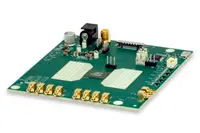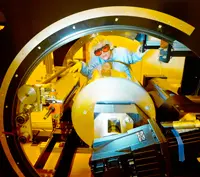Electronics News
Archive : 21 January 2016 год
 ARM has launched what is says is its highest performing and most power efficient 4K capable display processor. The Mali-DP650, which is optimised for 2.5K formats, is intended to drive new visual content and gaming experiences on mobile devices.
ARM has launched what is says is its highest performing and most power efficient 4K capable display processor. The Mali-DP650, which is optimised for 2.5K formats, is intended to drive new visual content and gaming experiences on mobile devices.
“The processor will enable mobile screens with multiple composition layers, for graphics and video, at full HD (1920 x 1080 pixels) resolutions and beyond while maintaining excellent picture quality and extending battery life,” claimed Mark Dickinson, general manager of ARM’s media Mali-DP650 is optimised for 2.5K formats, including WQXGA (2560 x 1600 pixels) for tablets and WQHD (2560 x 1440 pixels) for a mobile screen.
It can support up to seven composition layers but, by doubling the width of the AXI bus to 128bit, developers can increase the number of 4K composition layers available.
“Smartphones and tablets are increasingly … allowing people to securely download content once and carry it to view on whichever screen is most suitable. The ability to stream the best quality content from a mobile device to any screen is an important capability ARM Mali display technology delivers,” Dickinson added.
Author
Graham Pitcher
Source: www.newelectronics.co.uk
 The NYU WIRELESS research centre has announced it will build an advanced programmable platform to design, prototype, and validate technologies vital for the millimetre wave (mmWave) radio spectrum, which is claimed to be potentially key to launching 5G.
The NYU WIRELESS research centre has announced it will build an advanced programmable platform to design, prototype, and validate technologies vital for the millimetre wave (mmWave) radio spectrum, which is claimed to be potentially key to launching 5G.
Funded by a National Science Foundation (NSF) programme that supports exploratory work on potentially transformative research, the platform will be one of the first of its kind available to researchers from academia, government, and industry that are driving the early stages of mmWave technology.
mmWave communication relies on highly directional transmissions in which energy is concentrated in narrow beams. Current mmWave prototyping systems use directional horn antennas mounted on mechanically rotatable gimbals. These mechanical systems are too large and slow for mobile applications. The new software-defined radio (SDR) platform will integrate an electrically steerable phased array with no physically moving parts and near-instantaneous steering. Equipment from SiBEAM will provide the RF front end for this testbed.
Sohrab Emami, chief architect at SiBEAM, said: “Only mmWave spectrum provides sufficient capacity to enable the applications envisaged for 5G services and that our electrically steerable phased array antenna technology is fundamental to delivering those services effectively.”
Equipment from National Instruments (NI) will provide a high bandwidth and massive baseband processing system to create mmWave prototypes capable of high data rates and very low latency.
James Kimery, director of RF research and SDR marketing at NI, said: “Our software-defined platform based on LabVIEW and PXI is ideal for researching and prototyping cutting-edge technology to achieve faster data rates in the mmWave spectrum.”
The mmWave frequencies above 10GHz are said to be a promising frontier in the quest to greatly expand the capacity in cellular and local area networks to accommodate the increased bandwidth needed in the future. The mmWave spectrum could provide 200 times the capacity of all of today’s cellular spectrum allocations, and 5G is projected to become more than 1000 times faster than 4G.
“The development of an open-source, powerful SDR platform will greatly speed the development of mmWave systems and allow academic and industry groups to bring design ideas to reality,” said Sundeep Rangan, NYU WIRELESS director. “This project was only possible by leveraging the expertise of companies such as NI and SiBEAM and with crucial support from NSF.”
The first version of the system will operate in the 60GHz band.
Pic: SiBEAM will provide the RF front end for the NYU WIRELESS testbed
Author
Tom Austin-Morgan
Source: www.newelectronics.co.uk
 York EMC Services (YES) has expanded its UKAS accreditation to add the testing of products containing a radio function to its portfolio. Short Range Devices (SRDs) feature amongst YES’s initial accreditation encompassing products ranging from car key fobs to security and social alarms.
York EMC Services (YES) has expanded its UKAS accreditation to add the testing of products containing a radio function to its portfolio. Short Range Devices (SRDs) feature amongst YES’s initial accreditation encompassing products ranging from car key fobs to security and social alarms.
The Radio and Telecommunications Terminal Equipment Directive, to which radio products should comply for sale in Europe is being replaced by the Radio Equipment Directive in June 2016 requiring manufacturers to declare compliance with a changed set of regulations.YES offers advice to manufacturers, importers and distributors on the Directive changes and the implications for their business.
“The technology available is constantly changing which means we need to evolve to make sure that we continue to meet the regulatory compliance needs of our customers.” said Nick Wainwright, chief executive of YES. “The drive for interconnectivity of devices means that radio functionality is becoming widespread and this investment demonstrates YES’s commitment to establishing itself as a leading provider of services in this sector.”
In addition to SRDs, YES’s accreditation also covers aspects of the testing for Wideband Transmission Systems in the 2.4GHz band and Broadband Radio Access Networks operating at 5GHz.
Author
Tom Austin-Morgan
Source: www.newelectronics.co.uk
 Researchers from the Leibniz Institute for New Materials (INM) have developed nanoparticle inks featuring transparent, conductive oxides (TCOs) and claim the transparent lines and patterns, which can be created by direct gravure printing on thin plastic foils remain electrically conductive even after bending.
Researchers from the Leibniz Institute for New Materials (INM) have developed nanoparticle inks featuring transparent, conductive oxides (TCOs) and claim the transparent lines and patterns, which can be created by direct gravure printing on thin plastic foils remain electrically conductive even after bending.
According to the team, conductive TCO coatings are usually applied using high vacuum techniques, such as sputtering. Patterning TCO coatings requires additional process steps, including photolithography and etching. These are more costly than the one step printing process enabled by the TCO inks.
“We use TCOs to produce nanoparticles with special properties”, said Peter William de Oliveira, head of the Optical Materials Program Division. “The TCO ink is created by adding a solvent and a special binder to the TCO particles.” The binder performs several tasks: it not only makes the TCO nanoparticles adhere well on the film, it also increases the flexibility of the TCO coating. After curing under UV light at temperatures of less than 130°C, the coating is ready.
The transparent electronic inks are said to allow conductor tracks to be produced using a reel to reel process. The team says initial trials have been promising and it adds that the use of structured rollers will allow larger structured conductive surfaces to be printed at high throughput and low cost.
Author
Graham Pitcher
Source: www.newelectronics.co.uk

